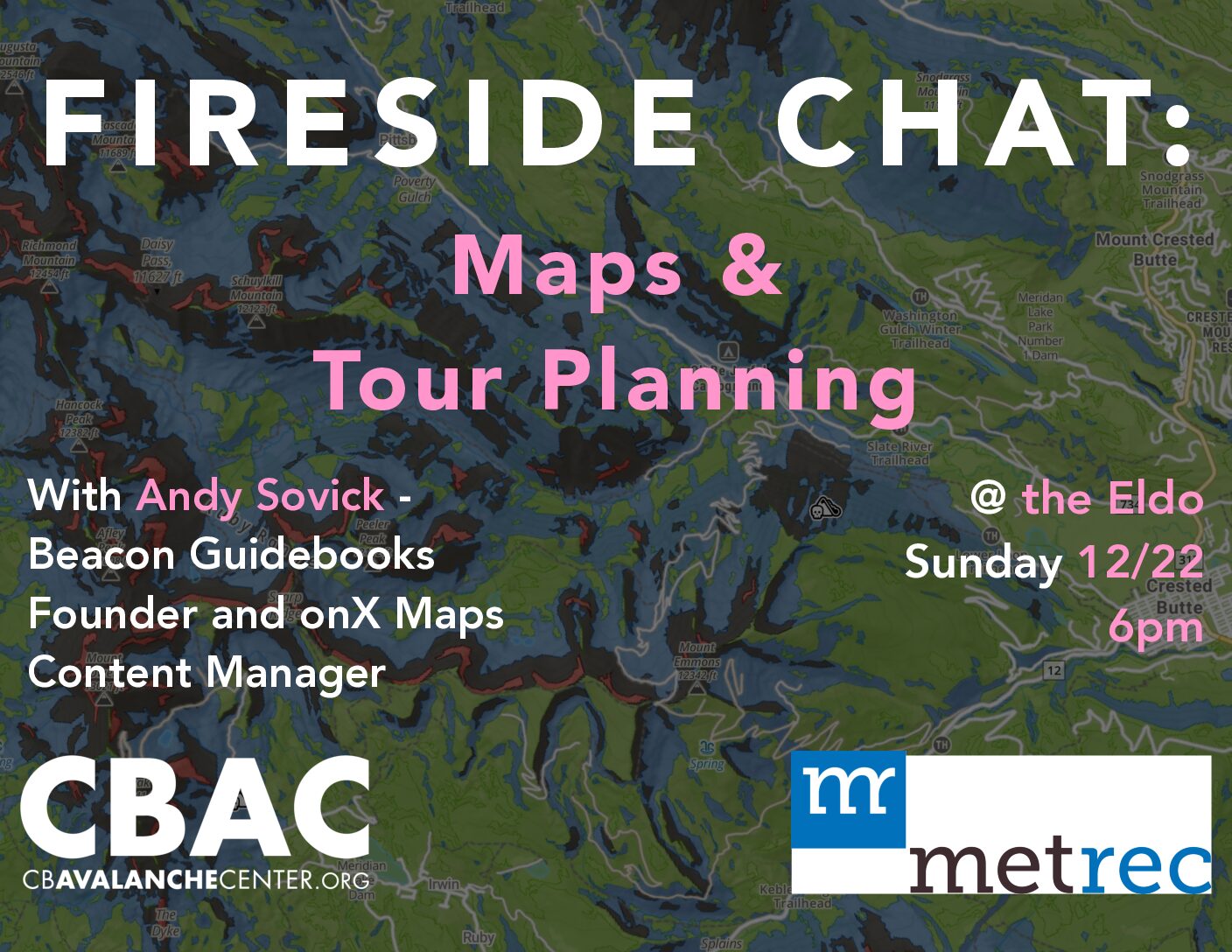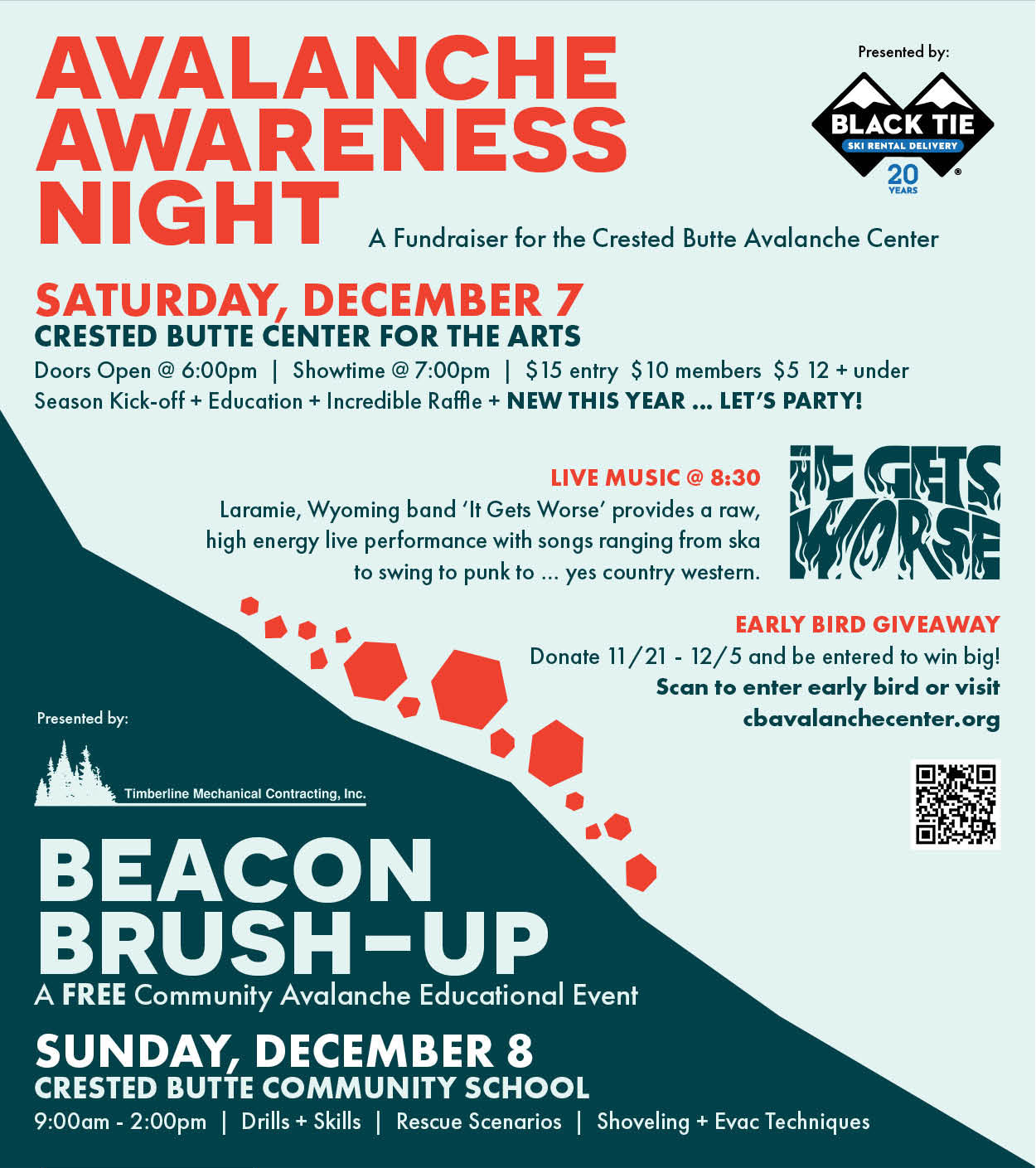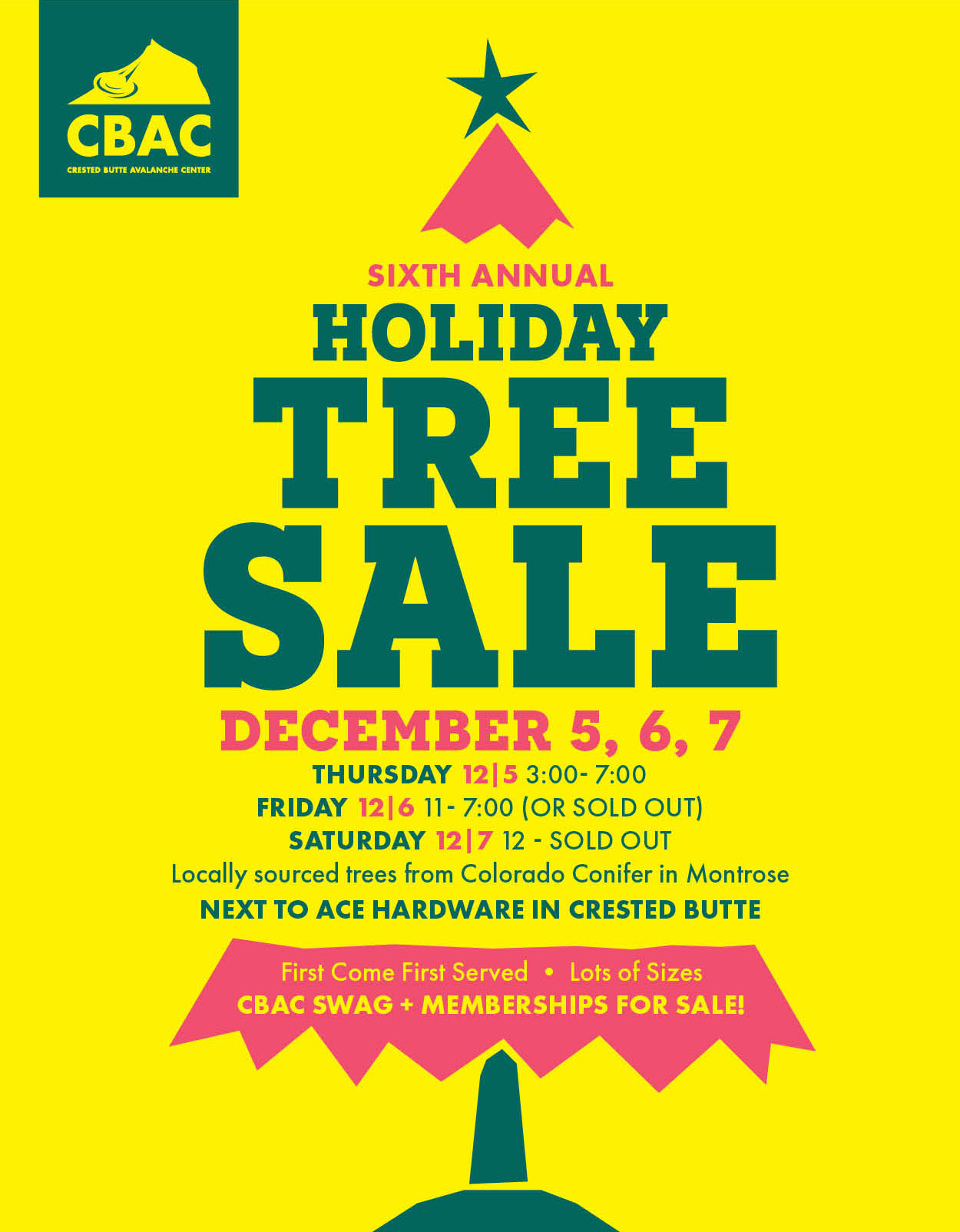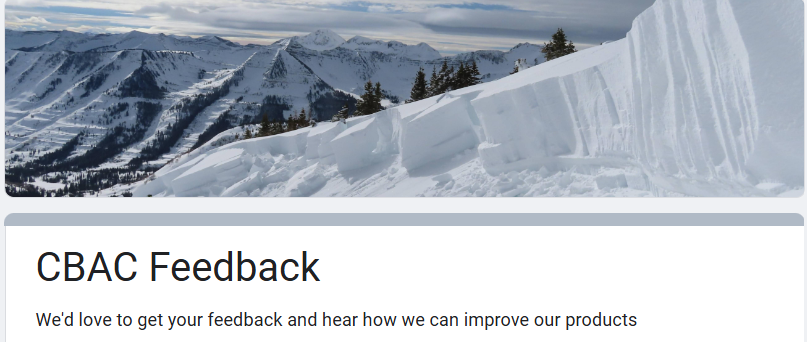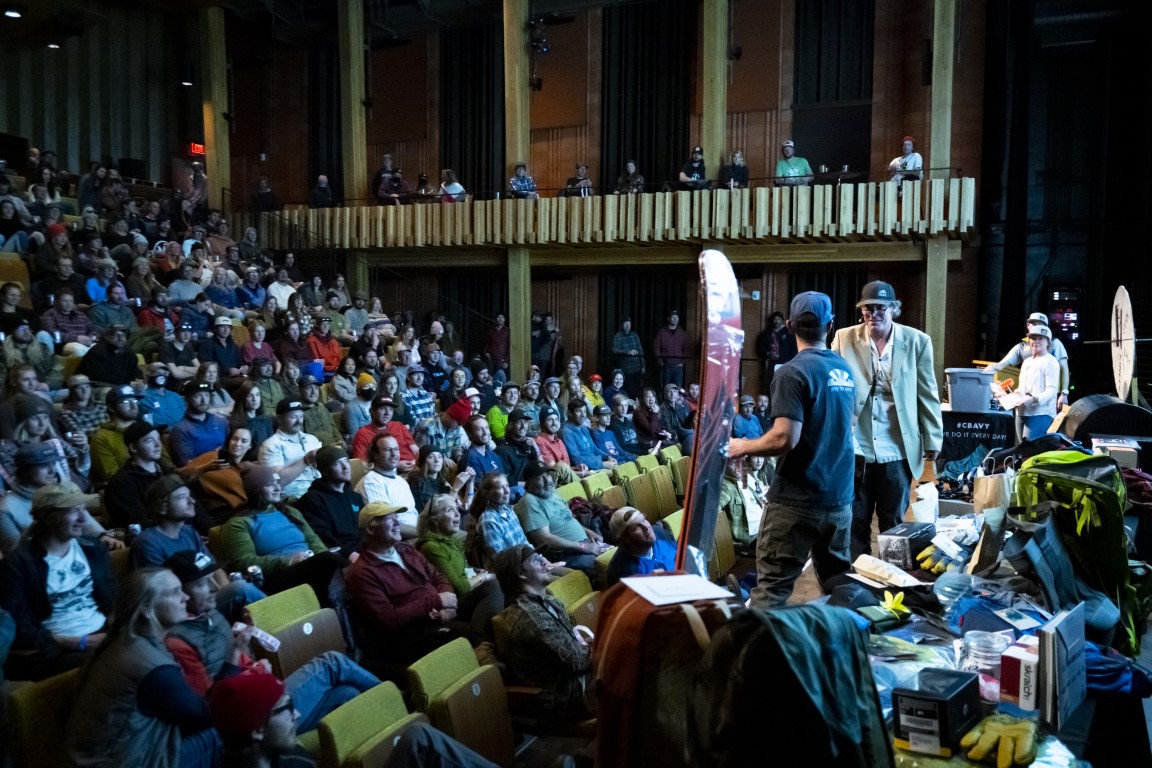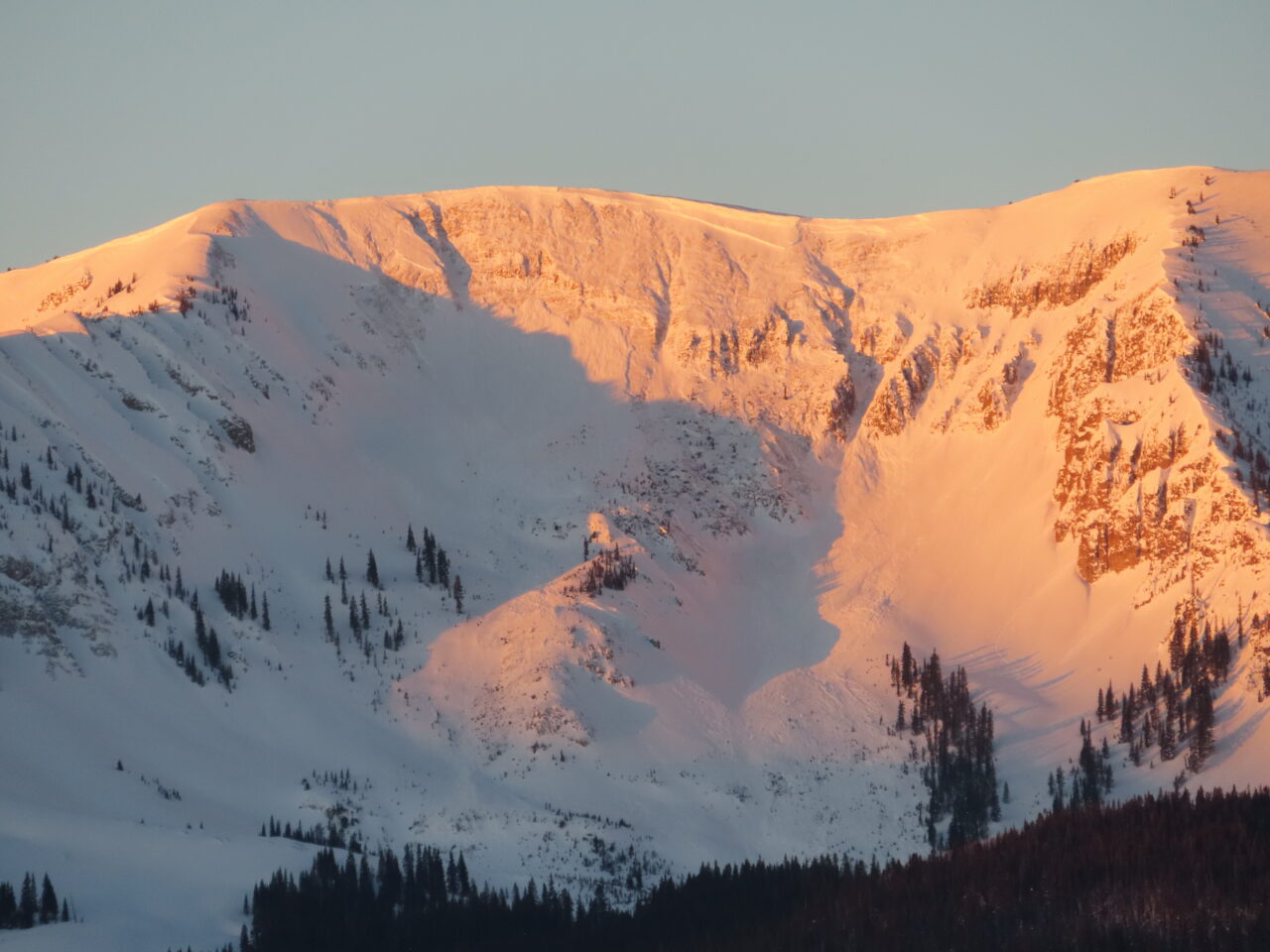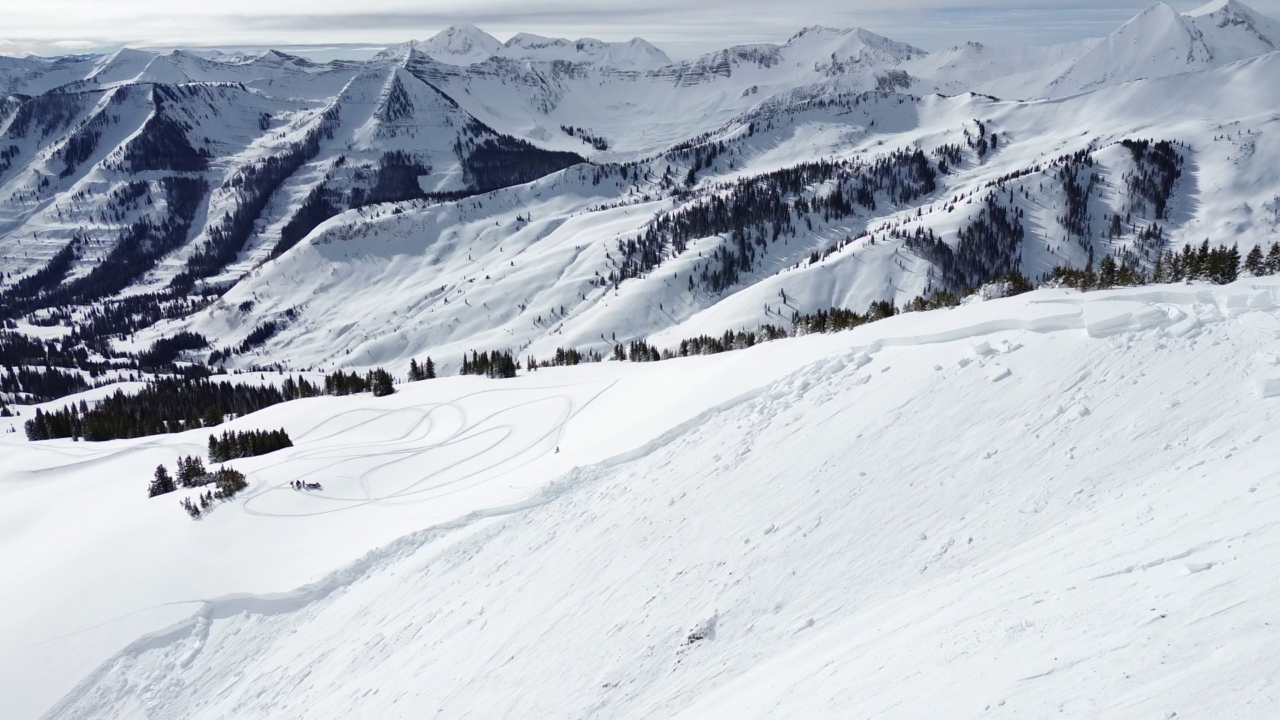AVY App for CBAC
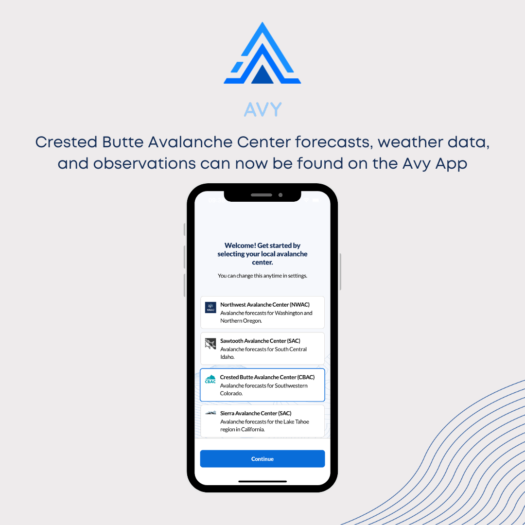

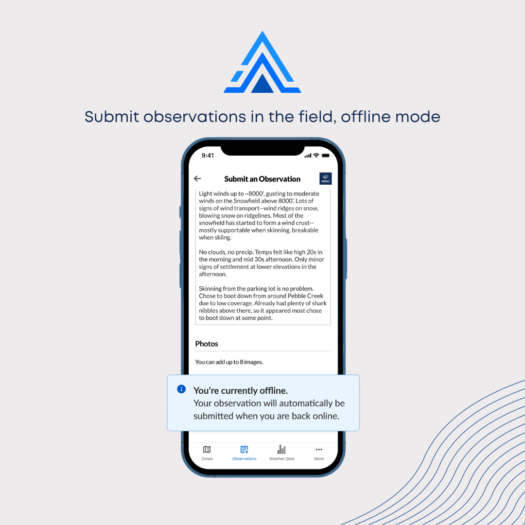
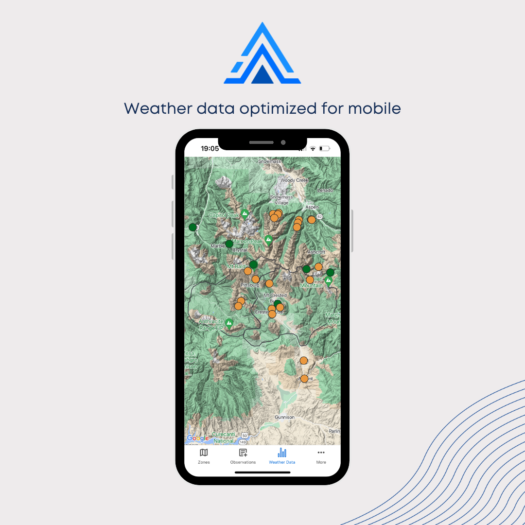
Survey Results
We want to thank everyone who participated in our CBAC survey over the summer. Our staff and board have reviewed the public’s feedback to consider improvements that we can make as an organization. The survey also highlighted an opportunity for us to better explain some CBAC resources and protocols that not everyone is aware of. We’ve addressed some of the more common feedback points below.
“We want a mobile app!”
We heard your feedback and have partnered with the Northwest Avalanche Center to offer a mobile app. You can download the “Avy” app for iPhone and Android; CBAC forecasts should be available on the app by the end of November. The app will offer offline functionality for retrieving forecasts and submitting observations. Our website will continue to be the most comprehensive resource for all things CBAC.

“Avy Awareness Night and raffle are too long.”
We hear you, so we are mixing things up this year. The first half of the night will be presentations and a shorter raffle. The second half of the night will be live music! December 7th at the Center for the Arts.
“I’m confused about local placenames.”
Yes, there are many local names out there (e.g., Birthday Bowl, Friendly Finish, PBR, etc.), and we understand the frustration. Our forecasters do their best to use the placenames listed in the Crested Butte Terrain Atlas and OnX Backcountry app. We use placenames from the USFS topo maps in areas lacking established guidebook names. More importantly, we also geotag all of our observations and avalanche activity on our observations page. If you are confused by a placename, look at the corresponding dot on the observations or avalanche maps.
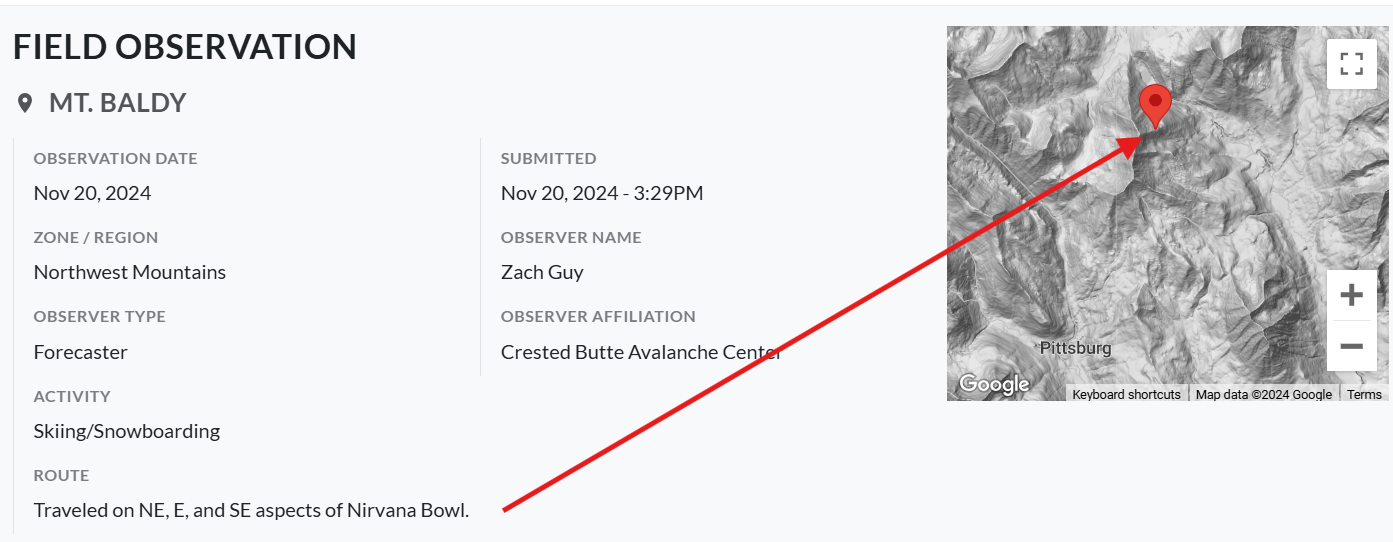
“I want maps of good low-angle ski options and well-known avalanche paths.”
Our avalanche terrain map shows both! Simple terrain (green) is below the threshold slope angle for nearly all avalanche releases, or it covers heavily forested terrain that is well anchored. The map also considers runout zones below avalanche start zones. If you see challenging (blue) or complex (black) terrain on a low-angle slope, it is because there are overhead hazards. Remember, this map is independent of snow and avalanche conditions; it only classifies avalanche terrain severity. Read this for more information about what this map shows and how it was made.
“We miss the colored avalanche rose.”
So do we! There were many benefits to adopting the new NAC observation platform, but one of the unfortunate losses is that the avalanche rose developed by Michael and Reggie is no longer functional. The developers of our new shared platform have limited resources to take on supplementary projects like integrating CBAC’s old rose. However, the new platform has many tools for visualizing the data, similar to the colored avalanche rose. By using filters for avalanche problem, aspect, elevation, size, date, etc, you can still explore patterns of avalanche activity.
“The two forecasts are redundant. I prefer one forecast.”
We moved to two different forecast zones a few years ago to more clearly illustrate differences in avalanche danger and avalanche problems between our deeper zone (the Northwest Mountains) and our shallow zone (the Southeast Mountains). Our forecast discussion is always the same for each forecast product, and it typically discusses nuances between the zones, forecast data and evidence, etc. On days when conditions vary across the region, we may write different “Bottom Lines” and show different danger ratings or avalanche problems for each zone. So if you are trying to decide which zone to travel to, just read the forecast discussion once and compare danger ratings and problems. If you already know which zone you are headed to, then it’s a one-stop shop with the forecast for your zone of choice.
“Extended forecast season would be helpful.”
Some users asked for a longer forecast season, especially in the spring. This year, we’ve allocated the resources to extend daily forecasts into the first weekend of May if we have an active spring like last year. That’s about two weeks later than usual. We typically monitor conditions during the shoulder seasons (early fall, late spring) and post updates if conditions change from our early or late-season travel advisories.
“Can you delineate the two forecast zones?”
When we first divided the Crested Butte area into two forecast zones, we looked at historical patterns for snow depth, avalanche activity, and snowpack structure to draw the boundary where it is. One of the challenging outcomes is that the boundary line splits some areas that see a lot of use: Mt. Emmons and Washington Gulch. Our forecasts generalize conditions across entire forecast zones, so frequently, conditions near the boundary will be a blend of the deeper zone and shallower zone conditions. With that being said, we added a list of popular travel zones to our forecast zone map to help you determine which zone you are traveling in. For example, Coney’s and Red Lady Bowl is in the Southeast Mountains Forecast Zone, while Redwell Basin and Schuylkill Ridge are in the Northwest Mountains Forecast Zone.
“Why are the forecasters traveling there?”
Our goal is to monitor conditions across our whole forecast zone, in areas that are used by skiers, snowmobilers, pedestrians, and everyone else. We rely on various modes of winter travel to move efficiently and connect with different at-risk users, following the winter travel plan outlined by the Gunnison National Forest. Our fieldwork goals are often to validate or get feedback on avalanche problems, which means we may be traveling to the type of terrain that our forecasts warn about. For example, our forecast might say, “The safest travel is in wind-protected terrain below treeline” yet you’ll notice our forecaster triggered numerous slabs from wind loaded alpine slopes. These field days often involve lots of ridgeline travel, attempts to remote trigger or ski cut when terrain and impacts are appropriate, and advanced understanding of terrain/avalanche behavior — they aren’t a model for where or how to go to have an easy, fun, and risk-free day in the backcountry. Please look to our forecast products for the appropriate travel advice each day.
“I want to view weather station data in tabular format.”
We have that option! From our weather station page, click on the “Table” icon on the top right of the page. You’ll be able to view, sort, filter, and color code the data. Bookmark this page if you like the tabular format.
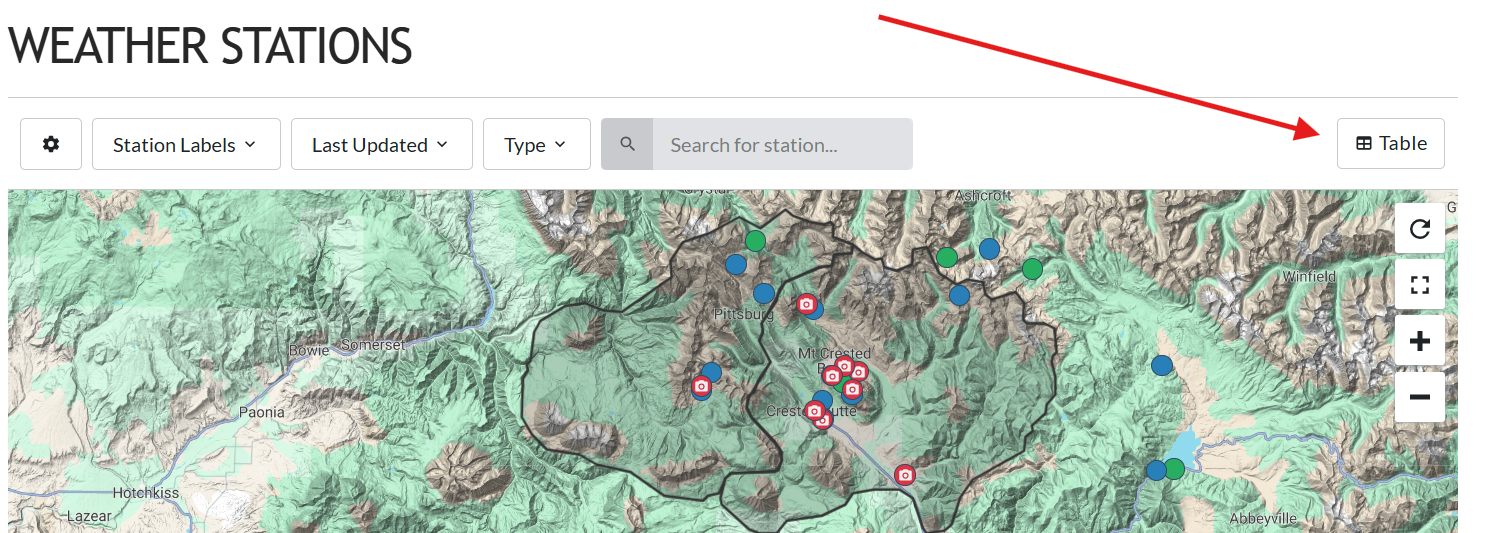
“I probably should submit more observations.”
We get it, submitting observations can be time-consuming, intimidating, and more. Avalanche forecasting is challenging and always involves uncertainty; public observations are an important resource for us to increase forecast confidence and accuracy. Thus, your observations help foster a safer backcountry community. Here are some things to think about regarding the most common obstacles to submitting observations.
- “I don’t have time or energy at the end of my day.” Fair enough! Our new app will make it easy to submit a quick observation while you are out of service in the backcountry; the info gets relayed when you return to cell service. If filling out an observation form sounds tedious, you can also send us a quick text or voicemail on our observation hotline: (970) 444-2170, you can shoot us an email at cbavalanche@gmail.com, or tag us/DM us on social media.
- “I’m afraid of public judgment or criticism.” You can submit an observation anonymously, and you can choose to keep it hidden from the public so that only our forecast team can review it (See below). We’re always just grateful to hear about avalanches!

- “My observational skills aren’t valuable / I don’t know all of the technical jargon.” Your ob can still be helpful to us! Photos of avalanches are worth a thousand words (our forecasters will fill in all the nerdy avalanche details for you). Simple, objective observations like “We saw cracks shooting 20 feet” “We didn’t see any obvious signs of instability,” or “2 feet of new snow” are quite helpful too. Our observation form prompts you for the most important information: no snow science degree is required. We also try to quality-check our observations page, so if you share something that seems unusual/inaccurate to us (for instance, you report a new avalanche, but we suspect it ran a week ago), we’ll probably reach out to you and get some details or make adjustments before publishing it, and we won’t publish duplicate observations of the same avalanche if someone already shared it.

- “I don’t want to give away my secret stash.” No problem. In the location fields, you can give a general name like “Kebler Pass Area” or “Slate River” and drop the location pin on the well-known road or trailhead where your day started from.
- “The CBAC forecasters are out there every day, fully immersed.” We do pride ourselves on a strong field presence, but public data is very useful as well because we can only visit one or two areas per day. As the danger starts to decline after a storm, it is helpful to hear about signs of instability or lack thereof or where you see recent avalanches. That helps us dial in patterns and trends quickly to improve the next day’s forecast.
Avy Awareness Night! December 7, 2024
Save the date!
CBAC’s Annual Avalanche Awareness Night is set for December 7, 2024 at the Center for the Arts. We’re rolling out a new format this year: first half education, second half PARTY! More details to come.
End of season survey
We’d love your feedback on how we can improve our products! This survey should take about 10 minutes and will help us continue to develop our products.
2023-24 Annual Report
The season was a mixed bag of emotions for all of us at the CBAC and in the community. While it was another great season of skiing and riding, we were hit hard by the loss of two friends to the mountains. Our 24th season forecasting for the Gunnison Valley was defined by two treacherous weak layers – the source of challenging, unique, and tragic persistent slab issues. The report also highlights successes from our outreach and operations and recognizes the many partners and sponsors who support the CBAC.
To read the full annual report, visit this link or use the pdf viewer below.
CBAC_AnnualReport2024
Community Thank You Party
We wouldn’t be who we are without all of you so we want to thank everyone with a party!
Join us at the Talk of the Town Friday, May 3 from 5-8 p.m. Live music from local band Juice, formerly known as Atmospheric Whisky River, and free beer!
We will also announce the winner of the observation contest for a pair of Weston skis.
Best of all, it’s free!
Trailhead Day Saturday – Kebler
Swing by for the last trailhead day of the season. Kebler Pass TH, This Saturday 4/6, 9am-2pm.





